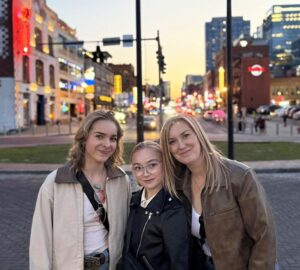By Laura Bohnert
It’s no secret that forced marriages and selling child brides into slavery are horrible acts—we often hear the horror stories coming from overseas—but what many don’t realize, as they wrap up their Canada 150 celebrations, is that it’s happening right here in our own backyard, too.
The fact that there are still child brides and forced marriages is a known and serious problem across the globe, but what is lesser known is that it’s a big problem in Canada, too.
Worldwide, an estimated 15 million girls are married before they reach the age of 18 every year—a figure that is nearly impossible to accurately assess considering the largely undocumented nature of the illicit activity.
And while child marriage is particularly shocking, it is also important to note that forced marriage doesn’t have age restrictions: anyone can be affected, regardless of age, gender, or religious beliefs.
In September of 2013, the South Asian Legal Clinic of Ontario released a report that counted 219 confirmed or suspected cases of forced marriage—and they happened in Ontario and Quebec alone between 2010 and 2012.
In 57 per cent of the cases, records show that the individuals were taken out of Canada to be married. This could in large part be due to Canada’s marriage laws, which set the legal age of marriage at 18, although the particular laws vary between provinces. However, in many provinces within Canada, a person as young as 16 or 17 can be married provided he or she has consent from both parents or legal guardians.
This exception creates a legal grey area that can have serious implications when it comes to the possibility for forced marriages and even child brides, especially since the exceptions in no place specify the need for the bride’s consent.
Samra Zafar recently spoke out about her experiences as a child bride. Zafar, at 16, was forced to marry a 28-year-old man in Mississauga, Ontario. Despite the abuse she faced, she managed to get a university education, and that helped not only to get out of her marriage, but also to speak out about child brides and forced marriages—and since she has, Zafar has been approached by more and more women who have suffered the same fate.
According to Zafar, Canadian teachers on multiple occasions have told her about girls in grades 10, 11, or 12 who visited their family’s country for the summer and never came back.
Child brides and forced marriages are prevalent issues in Canada, but they are kept silent, Zafar notes.
That silence does as much harm as the prevalence of the issues themselves.
And if we still aren’t convinced of the silence that is shrouded by the celebrations of our nation, then we should look a little closer at the likely fate of a group of people that is even further smothered in silence; we should ask the question that is still not being asked: what do we really think is happening to Canada’s missing indigenous women?
Chances are, we already know the answer—and we just don’t want to say it out loud.







More Stories
Rising tariffs, skyrocketing duties and an Albertan forestry industry in need of support at home